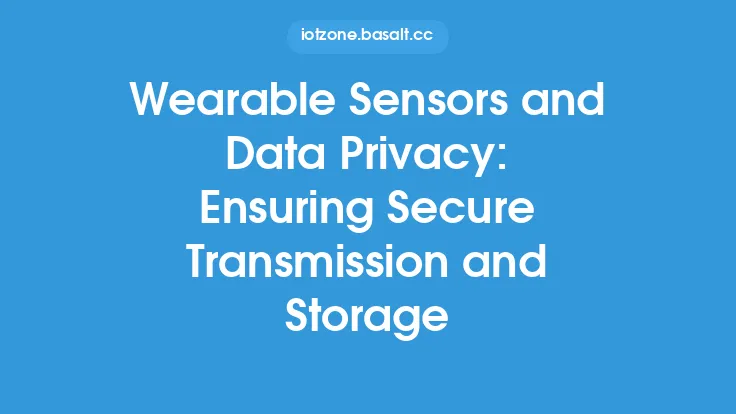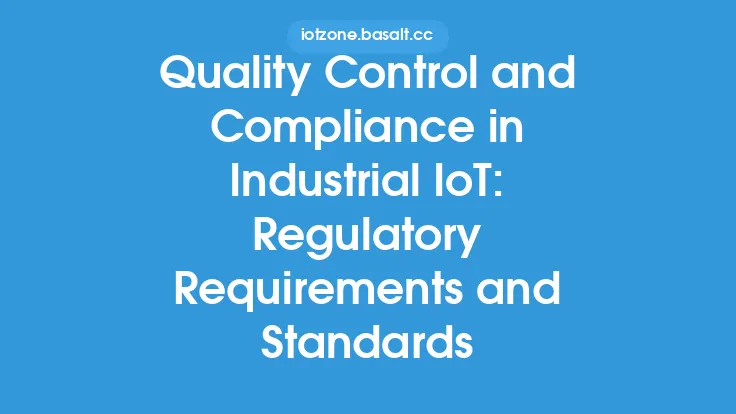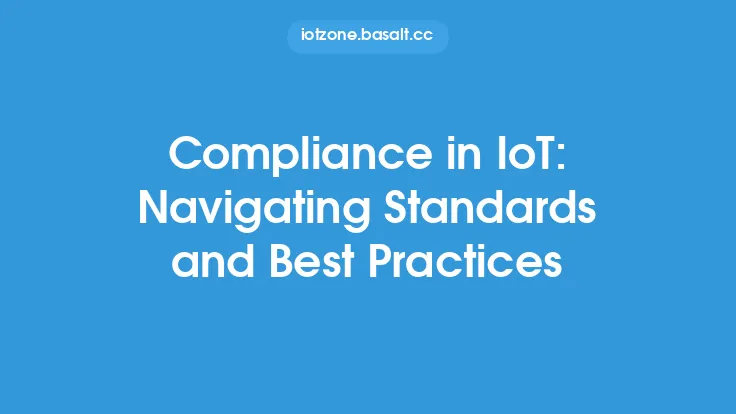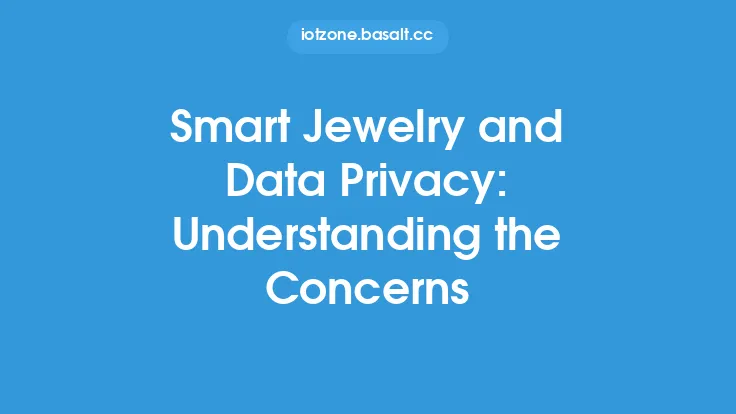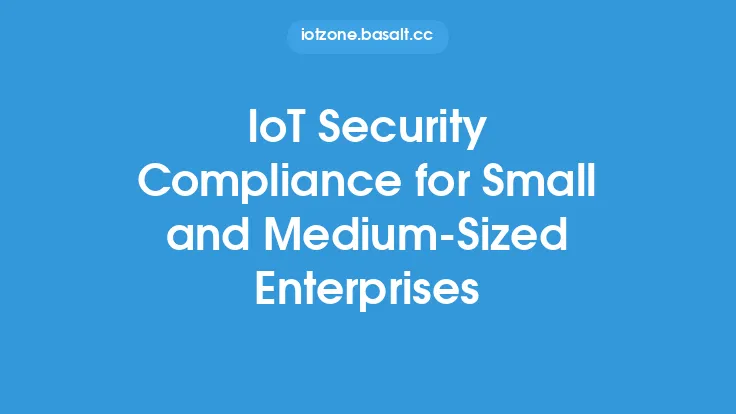The increasing use of Internet of Things (IoT) devices has led to a significant rise in the amount of personal and sensitive data being collected, transmitted, and stored. As a result, data privacy has become a major concern for individuals, organizations, and governments worldwide. Ensuring compliance with international regulations is crucial for IoT device manufacturers, service providers, and users to protect sensitive information and maintain trust in the IoT ecosystem.
Introduction to IoT and Data Privacy
IoT devices, such as smart home appliances, wearables, and industrial sensors, collect and transmit vast amounts of data, including personal and sensitive information. This data can include personally identifiable information (PII), such as names, addresses, and financial information, as well as sensitive data, such as health and wellness information, location data, and behavioral patterns. The collection, transmission, and storage of this data raise significant data privacy concerns, as it can be vulnerable to unauthorized access, misuse, and exploitation.
Key International Regulations
Several international regulations have been established to protect data privacy and ensure compliance in the IoT ecosystem. Some of the key regulations include:
- The General Data Protection Regulation (GDPR) in the European Union (EU), which sets strict data protection and privacy standards for organizations operating in the EU.
- The California Consumer Privacy Act (CCPA) in the United States, which provides California residents with greater control over their personal data and imposes strict data protection requirements on businesses.
- The Personal Information Protection and Electronic Documents Act (PIPEDA) in Canada, which sets out data protection and privacy standards for organizations operating in Canada.
- The Asia-Pacific Economic Cooperation (APEC) Cross-Border Privacy Rules (CBPR) system, which provides a framework for protecting personal data in the Asia-Pacific region.
Compliance Requirements for IoT Device Manufacturers
IoT device manufacturers must comply with international regulations to ensure the secure collection, transmission, and storage of sensitive data. Some of the key compliance requirements include:
- Implementing robust security measures, such as encryption and secure authentication protocols, to protect data in transit and at rest.
- Providing transparent and clear privacy notices and policies to inform users about data collection and use practices.
- Obtaining explicit user consent for data collection and use, and providing users with control over their data, including the ability to opt-out of data collection and use.
- Implementing data minimization and retention policies to limit the collection and storage of sensitive data to only what is necessary for the intended purpose.
- Conducting regular security audits and risk assessments to identify and mitigate potential security vulnerabilities.
Technical Requirements for IoT Data Privacy
Ensuring compliance with international regulations requires IoT device manufacturers to implement technical measures to protect sensitive data. Some of the key technical requirements include:
- Implementing end-to-end encryption to protect data in transit and at rest.
- Using secure communication protocols, such as HTTPS and CoAP, to protect data transmission.
- Implementing secure authentication and authorization mechanisms, such as OAuth and OpenID Connect, to control access to sensitive data.
- Using secure data storage mechanisms, such as encrypted databases and secure file systems, to protect sensitive data.
- Implementing regular software updates and patch management to ensure that IoT devices and systems are up-to-date with the latest security patches and fixes.
Best Practices for IoT Data Privacy
In addition to complying with international regulations and implementing technical measures, IoT device manufacturers and users can follow best practices to protect sensitive data. Some of the key best practices include:
- Implementing a privacy-by-design approach to IoT development, which involves integrating data protection and privacy considerations into the design and development of IoT devices and systems.
- Conducting regular security audits and risk assessments to identify and mitigate potential security vulnerabilities.
- Providing transparent and clear privacy notices and policies to inform users about data collection and use practices.
- Obtaining explicit user consent for data collection and use, and providing users with control over their data, including the ability to opt-out of data collection and use.
- Implementing data minimization and retention policies to limit the collection and storage of sensitive data to only what is necessary for the intended purpose.
Challenges and Opportunities
Ensuring compliance with international regulations and protecting sensitive data in the IoT ecosystem poses several challenges and opportunities. Some of the key challenges include:
- The complexity and variability of international regulations, which can make it difficult for IoT device manufacturers and users to ensure compliance.
- The rapid evolution of IoT technologies and devices, which can create new security vulnerabilities and challenges.
- The lack of standardization and interoperability in IoT devices and systems, which can make it difficult to implement robust security measures.
- The need for IoT device manufacturers and users to balance data protection and privacy with the need for data-driven innovation and economic growth.
Conclusion
Ensuring compliance with international regulations and protecting sensitive data in the IoT ecosystem is crucial for maintaining trust and security in the IoT ecosystem. IoT device manufacturers, service providers, and users must implement robust security measures, follow best practices, and comply with international regulations to protect sensitive data and maintain trust in the IoT ecosystem. By prioritizing data privacy and security, we can unlock the full potential of IoT technologies and create a more secure, trustworthy, and innovative IoT ecosystem.
